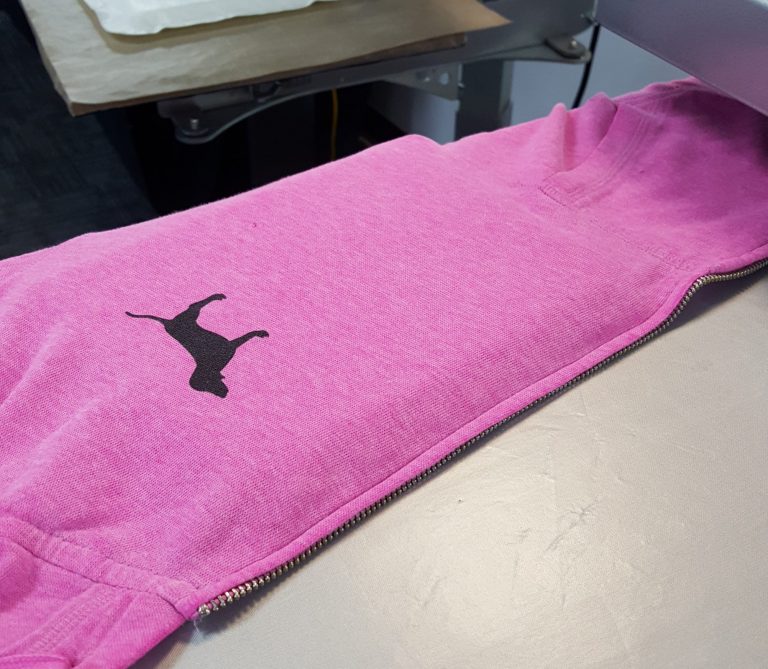We hear it pretty regularly, a customer calls in saying that their material doesn’t adhere to the garment after they attempt pressing it to the shirt. They’ll be pressing it at the right temperature, at the right time, and everything else, and they’re upset because they’ve pre-cut their design out to all the material and the shirts are due today.
Typically, heat transfer vinyl is pretty agreeable to time and temperature pressing instructions. For example, I’ve seen Easyweed press at temperatures as low as 270 F and I’ve seen it press at as hot as 375 F… both a far cry from the recommended 305 F. While those temperatures are recommended for good reason (it works most frequently and it works with the best durability/longevity), it’s not 100% necessary that the temperature be exactly at 305 F. The material will most likely not fall off if there’s a temperature difference of 5-10 degrees.
The most important factor in adhering material to the fabric is even pressure.
Anything on the fabric that raise up away from where you’re adhering vinyl can cause uneven pressure, things like:
- Zippers
- Buttons
- Hoodie strings
- Collars
- Hems
- Seams
- Pockets
- Or even patches of raised material that’s already adhered to the shirt (Twill or Brick are two good examples of thicker material like this)
When the upper heat press platen comes down on fabric while there’s raised fabric, the platen is not pressed firmly against a portion of the material. If you look at the image below, you’ll see that there is a small triangle of space from where the heat platen does not meet against the garment when pressed.

While it may not look like much, this gap only heats the area rather than coming in direct contact with the HTV. Enough to activate it, but no pressure to actually press the adhesive down into the fabric to create a strong bond. If most of the design is getting good pressure but the upper half near a hem is not, you’ll experience problems with the upper half of the material peeling up while pulling the transfer liner away.
There are a few solutions to preventing this problem.
If possible, the best solution is threading the garment on the heat press, or making sure the hems, collars, and other raised fabric are not present on the lower platen when pressing.

While this may be the most effective solution, sometimes it’s not the solution available. Most tabletop heat presses don’t allow you to thread fabric completely on the heat press. Not only that, if a design comes to close to a collar or button or zipper, you may have no choice but to put the raised material on the lower platen… thus rendering this solution ineffective.
In those situations, using a Teflon pillow is your next best bet. Teflon pillows, when inserted into the garment can create a raised surface of the fabric you intend to press on that will be raised higher than most other things on the apparel… thus causing the area you’re attempting to press on to be the first thing that the upper platen comes in contact with when dropping down.


We do sell Teflon Pillows in varying sizes that can assist with this method.
You may be inspired to simply increase your heat press’ pressure and pressing the crap out of it. While this may work for flattening down hems or seams to force an even pressure, this option may also have some unintended side effects.
First off, this could potentially cause damage in some cheaper heat presses. Using excessive pressure could potentially bend or break metal framework or locking mechanisms… or also put excessive pressure on pneumatic pistons used to keep the upper platen up when it’s in a raised position. It could also force the upper platen into a position that permanently offsets the heat press’ pressure.
Second, the increased pressure can cause damage to your garment. If you’re trying to get around zippers or buttons, both of these things can snap or break under pressure. Not only that, dyed polyester fabric or other artificial fabrics can sometimes retain a “burnt in” impression of the vinyl’s carrier liner or the upper platen due to the increased pressure.
Third, the increased pressure can sometimes cause the fabric’s texture to show up through the vinyl that’s pressed down.
All in all, Teflon pillows are generally the best solution to pressure difference.
I touched on this a little earlier about permanently offsetting your heat press’ pressure due to excessive pressure, but you can also test your heat press to ensure that the upper platen is coming down evenly.
Take four $1 bills and adjust your pressure so that it’s in a light-to-medium pressure. Then stick each dollar down on a corner of the heat press and clamp the heat press into a locked position. Then try sliding the dollar out at each corner. If it slides out in any corner, it can mean that your pressure is no longer even on your heat press. This doesn’t necessarily mean it’s time to throw out the press, but know that this can sometimes cause adherence issues with vinyl. You may want to bring your concerns up with your heat press’ manufacturer to see if such damage is covered under warranty, or give us a call to discuss potentially purchasing a new heat press.
filed under: Blogs, Heat Transfer Vinyl

